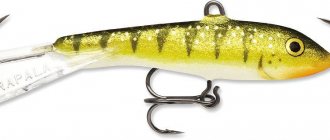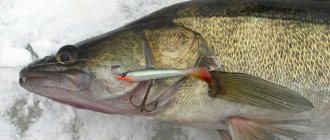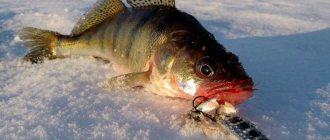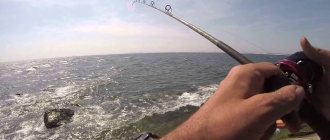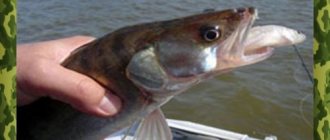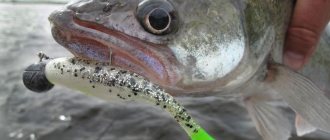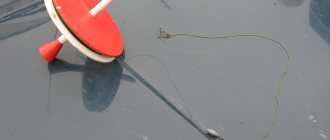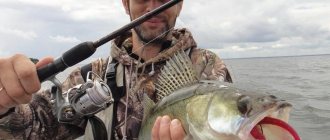Place and time
The time when you can catch fish in this way begins early in the morning and can last all day until the evening dawn.
The advantage of this method of fishing is that even a passive pike perch, which is located in a deep hole for an “afternoon rest,” can be easily caught with a vertical lure if positioned for fishing directly above the hole.
Pike perch lives in almost all freshwater bodies of Russia. This fish can be found in deep snags; this is the predator’s favorite habitat. Therefore, if you can correctly identify a sharp deepening of the bottom topography, then half the work in preparing for fishing for this predatory fish has already been done.
How to catch pike perch from a boat in a vertical line?
The fishing technique in this way is very simple:
- After the boat is above the place where the predator is feeding, the craft is placed with its side facing the wave and a spoon is cast from the opposite side.
- After the spoon reaches the bottom of the reservoir , a sharp swing of the rod is made, followed by freely lowering the bait to the bottom.
- As soon as the spoon is completely lowered , a sharp swing of the rod is made again. Thus, a large expanse of water is fished, since the boat is not anchored, but slowly drifts across the reservoir.
Tackle
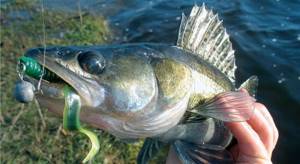
The gear for this method of fishing is quite simple and can be made independently at home.
Rules for choosing:
- If you use store-bought fishing rods , then you can purchase the shortest stick, no more than 1 meter long. Pike perch is not too fond of large baits, so the rod test can be only 20 g.
- The reel, also chosen without “bells and whistles”, copes with its function very well; a small inertial reel, although inertia-free, at a slightly higher cost, is successfully used for this method of catching pike perch.
- The fishing line must have a diameter of at least 0.4 mm. If the fishing line is chosen thinner, then the play of the bait at depth, with a vertical lure, is not so attractive for this fish.
The bait for hunting pike perch in this way is a vertical spoon, which, when lowered to the bottom and then rises, plays in the water column, thereby resembling a small fish that pike perch feeds on. To catch this fish, small spoons with a length of 50–70 mm are used.
Catching pike perch with sprat
It should be noted that currently, fishing for pike perch using sprat or (Caspian sprat) has become very popular among many fishermen. In general, sprat has always been the main prey for many predators in our reservoirs, but in winter it is most preferred by burbot and pike perch. I would like to note that sprat fishing is not a particularly difficult type of fishing, but it also has its own nuances that are definitely worth talking about.
Let's first look at sprat as bait. For me personally, the best results are when using fresh Caspian sprat (sprat) with shiny and clean scales when fishing. And although many of my friends conducted various experiments with different fry (roach, gudgeon or perch), in the end everyone agreed that sprat is the best bait for pike perch.
The sprat itself, from the herring family, is a small fish, about 6-8 cm in length, and weighing up to 10 g. It is usually painted silver and is somewhat similar to a small bleak. I would like to say that successful fishing for pike perch is largely due to the very specific cucumber smell of sprat, which pike perch likes. I would like to draw your attention to the fact that sprat is a very fatty fish, and when you put it defrosted in the hole, an oil stain will appear. Therefore, I would not recommend that you freeze and defrost the sprat many times, as it will then simply fall apart and fly off the hook. It is clear that when fishing it is better to use fresh sprat.
As for fresh sprat, in many reservoirs, for me, fishing began with catching the required amount of sprat using a lift. Fresh sprat will provide you with a more reliable bite, and during the bite, the pike perch will no longer be able to easily pull the bait off the hook. Of course, if you don’t have the time or opportunity to catch fresh sprat, you can buy a bag of frozen sprat in a store or market. For me personally, a bag with 30-40 fish is enough for good fishing using several rods. Sprat can also be bought by weight.
Now about the rod, I’ll say right away that catching pike perch with sprat will require you to have a very long and powerful lure, about 50 cm long. Such a powerful lure is needed, first of all, in order to reliably pierce the pike perch jaw even at depths of 10-12 meters. Also, it wouldn’t be a bad idea to get a powerful aluminum coil. The nod should be clearly visible and correspond to the sinker. The fishing line is winter, 0.35 mm in size with a special polymer coating.
If we talk about methods of attaching sprat to a hook, then the opinions of many fishermen are very ambiguous. Some say that it is best to hook the sprat onto the hook of a jig head or jig by the tail; they say the pike perch most often moves its head against the current, so the sprat in the water will turn its head towards the pike perch. There is another opinion that fishing with sprat will be more effective if you cut off the head of the sprat and, through two punctures, place it on a hook next to the spine of the fish. This method is more reliable and keeps the sprat on the hook longer. And the part of the sprat’s body, where there is a head, is placed on the upper hook of the tackle. But from personal experience I will say that pike perch quite rarely bites on the lower jig, more often on the upper one. It is clear that in this case the bottom hook on the jig is simply not needed, moreover, it can become a hindrance when fishing for fish on the ice, and then decide for yourself. Of course, the hook must be sharp, and if you also attach a sprat across it, it will behave actively in the water, which will definitely attract pike perch.
It should be noted that depending on what type of base bait you choose, the method of placing the sprat on the hook and its further position on the bottom largely depends. Whether it is fishing for pike perch using a spinner, a jig, a jig head or a single hook, the bait attachments will be different. Also, a lot depends on the tactics of the fishing itself, either it will be a stationary tackle on ice, or a tackle that involves active play near the bottom surface. One way or another, I would not recommend that you put a large sprat on a hook; a fish 4-6 cm long is enough and all the pike perch will be yours.
(2 ratings, average: 5.00 out of 5
prorybu.ru
Sheer trolling boat
A boat is used for this method of fishing only with a wide bottom , because with the fisherman positioned on the side when trolling, one careless movement can cause an unplanned swim in the reservoir along with the gear. Therefore, when choosing a watercraft for vertical fishing, preference should be given to heavy models made of metal or wood.
If, however, an inflatable boat is used for vertical trolling, then fishing in this way should be done with extreme caution, because the boat can easily be damaged by hooks from the tackle.
Lures used
The spinners used for vertical trolling of pike perch are the same as those used for spinning fishing - elongated, oscillating spinners of a wide variety of colors. In addition, silicone baits are widely used. Vibrotails, slugs, as well as some models of worms and larvae are considered pike perch varieties of edible silicone. The colors of the baits are selected based on the lighting, water transparency and bottom characteristics, but a fairly large number of anglers tend to believe that pike perch is partial to the bright light green color of silicone. Winter vertical spinners for pike perch are also often used, along with balancers and jigs. Amphipods with “Castmasters” are also popular. When catching pike perch with vertical lures, as with spinning fishing, a variety of baits in the arsenal is important - the presence of baits of various shapes and colors will help to interest even inactive fish and find out the preferences of pike perch in an unfamiliar body of water.
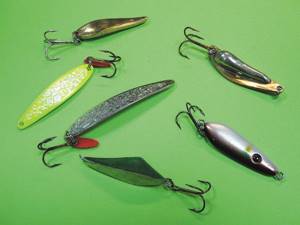
Photo 2. A variety of baits used for vertical trolling.
Important! When fishing vertically, hooks are not that uncommon. You should learn how to make pike perch spoons yourself - this will help you significantly save on bait.
Among homemade baits, tube spinners with oblique cuts at different angles work especially well for Volga pike perch.
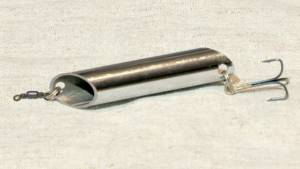
Photo 3. Tube spinners are the simplest homemade products.
Lures
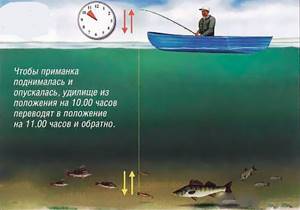
To fish for pike perch from a boat in a vertical position, you can use not only spinners designed for such fishing, but also live fish. When fishing with live bait, the movements of the rod should be smoother so that the live bait retains the ability to move underwater attractively for the fish longer.
You can fish this way with an artificial wobbler fish. Small sinking models with a capsule with balls inside are suitable for this purpose; such wobblers create a noise effect to better attract a predator.
But live bait still has advantages over artificial baits; not a single spinner or wobbler is able to replicate the attractive smell of live fish, and even a virtuoso fisherman is not able to imitate the “dancing under water” that live bait performs.
Bleak, the favorite delicacy of this predator, is used as live bait. To ensure that the fish is preserved for a long time and does not lose its “marketable appearance,” live bait is placed in a can for storing fish. Many models of this device are equipped with an aerator that saturates the water with oxygen, which significantly increases the lifespan of small fish.
If it is not possible to stock up on enough bleak for pike-perch fishing, then you can use sprat , which can just as successfully be used for catching pike-perch from a boat in a vertical line.
When fishing with heavy winter lures, you can make sudden movements with the rod without fear for the safety of the metal gear. Unlike live bait, it is almost impossible to damage the spoon.
You can try to catch this predator using silicone bait.
The tackle must be loaded, otherwise the light rubber will not be delivered to the bottom of the reservoir where the “saber-tooth monster” is located. In warm water, this fishing method very often brings results, especially if the sinker, to which a silicone bait is attached, is slowly drawn along the bottom of the reservoir.
With such wiring, a cloud of turbidity, which is raised by a lead sinker, will definitely be noticed by pike perch or other predatory fish.
Catching pike perch with sprat: secrets and subtleties of fishing
Catching pike perch with sprat from ice is a popular fishing method that is used in many regions of the country. Its effectiveness has been tested in various reservoirs, as well as large and medium-sized rivers where this strong and beautiful predator lives.
This method appeared a long time ago, when there were no different silicone baits and balancers. It was invented by experienced fishermen who thought of placing a dead fish on the hook of a large jig, a helicopter or a loaded hook.
Most often it is this small fish that serves as a bait. This is due to the fact that it has suitable dimensions and is most suitable for winter pike perch. In addition, such bait has a minimal cost and can be purchased at any grocery store. Therefore, the question of how to catch sprat is not even raised.
Fishing Features
When hunting for pike perch using sprat, an angler gets the benefits of both artificial bait and natural bait. He does not need to select the color, size, brand of “rubber” or balancer, since the bait has the necessary aroma and looks natural.
You can fish this way with both fresh sprat and frozen sprat. In principle, there is not much difference. Many zander fishermen prepare bait in advance so that later they do not have to run around the shops looking for this fish. It is put into bags and stored in the freezer until fishing.
Instead of sprat, you can use other small fish. In particular, fishermen buy sprat or anchovy. You can prepare bait in open water by catching it in advance using a small bait. In this case, the fisherman will be able to attach roach, bleak or perch to the hook.
If the fry is very tight and you couldn’t get it out, then you can quite effectively put a piece of fish on the hook. This is no worse, but it is advisable to prepare fillet strips at home in advance so as not to waste time on the pond.
The principle of catching a fanged one with a sprat differs little from the classic vertical trolling:
- A sprat or other small fish is put on the hook of a jig head, heavy jig or helicopter.
- The weight of the load is selected based on the depth in the fishing zone and the strength of the current.
- The bait is lowered into the hole towards the bottom.
- Then the angler begins to make a retrieve, consisting of twitches and pauses, the duration of which is adjusted to the mood of the pike perch.
In fact, this is how they catch it with a vertical spoon, a balance beam, and other winter pike-perch lures. The difference, perhaps, is that the pause may be longer due to the edibility of the bait.
Photo 1. Tulka is a small fish of the herring family.
The advantages of fishing with sprat
This method, despite the fact that it is quite ancient, is rarely used by young fishermen. Today, newfangled balancers, Finnish vertical spinners and silicone baits are more in use. But fishing with sprat also has its advantages:
- simplicity of the method;
- cheap bait, no need to purchase expensive baits for vertical fishing;
- versatility;
- catchability.
Fishing this way allows you to catch pike perch at any time of winter. In the dead of winter, many baits do not show the expected results, but not sprat. The passive fanged fish responds superbly to the offered bait. Moreover, he takes it confidently, which is not typical of this time.
Where to look for pike perch?
In sprat fishing, in fact, there are no special features in places where the fanged predator is hunted. You should look for it at typical winter sites. The most promising from the point of view of fishing using this method are:
- long ditches and large holes;
- channel dumps;
- areas near bridges;
- coastal edges.
In snags, fishing with sprat is not so convenient due to the catchiness of the bait. However, given their cheapness, such fishing has its place, especially looking at the cost of other “advanced” zander balancers and spinners.
At reservoirs, fanged fish are searched for along riverbed areas. The predator likes to be located on steep slopes at the very top. Vast reaches with medium depths and uneven bottom topography are also considered promising places for pike perch. Here the fish sticks to tubercles and various hills.
In general, pike perch prefer the presence of a current, the absence of algae and a hard bottom with a sandy or pebble structure. In places with stagnant water, aquatic vegetation and silt, there is no point in hoping to catch a fanged one.
Gear device
It is known that pike perch has a bony, hard mouth that is not so easy to reliably cut through, even with sharp hooks. In addition, the fish is of decent size and, when caught, behaves assertively and powerfully. This must be taken into account when choosing gear for winter fishing for fanged:
- The fishing rod chosen is hard, capable of making a sharp, sharp hook and at the same time extinguishing the first jerks of a weighty fish. Its length is about 60–90 cm. With such a fishing rod it is easy to carry out retrieving and you can spot pike perch without any problems.
- The fishing line, and in winter fishing nylon is preferable, is chosen with a diameter of 0.25–0.30 mm. Its strength indicators must be at least 3 kg.
Important!
Some fishermen try to use special winter braids that are impregnated with something and supposedly do not freeze in the cold. But in practice it turns out that monofilament still outperforms cord.
- The reel used is lightweight and made of plastic with a smooth motion. In fact, it is only needed for storing fishing line and for reeling it in during long walks from one pike perch point to another.
You don't have to use a leash. If there is a possibility that a pike will grab, then you can use a short steel twist to minimize the cut, not to lose the trophy and not to injure the fish.
Photo 2. One of the methods of baiting.
How to catch pike perch using sprat?
It is better to start mastering sprat fishing with simple jig heads with a round weight and a single hook. They are inexpensive, you can even make them yourself, and they are very versatile. Over time, you can try their different configurations, as well as large jigs, helicopters and rigs.
The hook of the jig head should not be too large, but at the same time it should be good to cut through the bony mouth of the fanged one. The length of its fore-end is selected to be half the size of the sprat used. If the bait is larger, it can be easily shortened with a knife by cutting off the head or front part of the fish.
It is customary to attach a sprat to a jig head in the classic way, as is done with silicone vibrotails. This option is simple and does not require any additional tricks. However, as a result, the back of the fish breaks after the first bite, and it quickly flies off the hook.
The second option involves planting a piece of sprat. The fisherman cuts off the upper part of the fish with a knife right on the pond, and puts the lower part on the hook. As a result, a narrow strip remains on the forearm, consisting of the abdomen, anal fin and half of the tail. Fishing efficiency does not deteriorate from this, but the bait holds stronger and longer.
Photo 3. Spoons, balancers, and wobblers are equipped with sprat.
Baiting with sprat should be done like any artificial pike perch bait. There are no particular differences in this:
- The fisherman drills a hole at a promising point.
- Places the sprat on the jig head and lowers it into the water.
- Place the bait on the bottom and pause for a few seconds.
- Then they make two turns with the reel, thereby raising the jig head above the bottom by several tens of centimeters.
- We make a short swing of the fishing rod and pause.
The height of throwing the bait and the duration of the stop depend on the mood of the pike perch. For a passive fanged, longer pauses are desirable. At this time, the bait makes damping oscillations, and the predator has time to “think” before grabbing the sprat.
When the bite is sluggish, it is useful to tap the jig head on the bottom and then lift it a couple of centimeters. The rising turbidity will certainly attract the attention of the pike perch and force it to take the bait.
Fishing out a hooked pike perch should be done quickly and decisively. You can’t let the predator come to its senses, otherwise it will begin violent resistance, which can lead to a runaway, especially when fishing in the area of snags. It often happens that the fanged one does not penetrate well and can spit out the bait without ever reaching the hole. Therefore, the sooner the angler gets him onto the ice, the better.
fishelovka.com
Recommendations
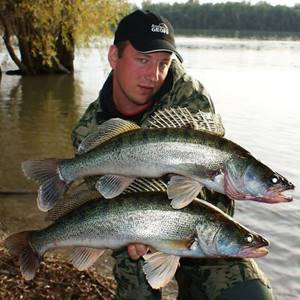
- You can fish vertically throughout the year , but the highest catches of the fanged predator can be obtained in late autumn, when this fish begins to eat heavily.
- It is worth doing vertical fishing for pike perch in areas of the reservoir with a rocky bottom. In such places, when casting spinning tackle from the shore, frequent hooks and breaks of the tackle occur, which is practically eliminated when vertical trolling from a boat or cutter.
- When fishing for predatory fish this way, the spoon is tied to the main fishing line without the use of leashes. Even if such a toothy predator as a pike lives in the reservoir. When fishing vertically, the hooking of the fish is carried out instantly and in most cases, even the pike does not manage to gnaw the line, due to the vertical rise of the fish and the predator not swallowing the bait too deeply.
- If it is not possible to purchase or rent a watercraft , then good results can be obtained by vertical fishing from some hydraulic structure, for example, a bridge or dam.
- When hunting for pike perch from a boat in a plumb line , you can do without a rod and reel at all; just wind the required amount of fishing line on a reel, tie a spoon, and you can fish by hand. With this method of fishing, you should use a fishing line with a diameter of at least 0.5 mm, so as not to cut your hands when fishing for trophy fish. If a rubber inflatable boat is used, then this method should be abandoned to prevent damage to the craft from sharp hooks.
- If pike perch fishing is carried out on a large body of water or on a river with intense current , then the use of a boat motor will provide high mobility and allow you to explore a large area of the lake or river.
- If the fish is so passive that for a long time the fisherman has to “play” with his gear on his own , then when fishing with artificial bait, you can use the tactics that are used for catching pike perch in the winter. To do this, you should tap the bait on the bottom, then slightly lift the bait, then repeat these steps again.
- In order to determine promising places in a reservoir for vertical trolling , you should pay attention to sections of rivers with reverse flows and whirlpools; in reservoirs with standing water, deep holes can be identified by the absence of ripples in the water.
- Catching pike perch from a boat in a vertical position can be very exciting during the post-spawning feast ; at this time, a fisherman, upon discovering a school of this predator, can catch a lot of fanged predators.
- It is necessary to start catching pike perch in a plumb line only at depths of 3 meters , if the depth is less, then the shy fish will not take the bait, and the angler will only waste time fishing in shallow water.
- If the current on the river is significant , then after a predator bites, you need to go back a little upstream and fish the lucky spot again. Pike perch very rarely travels alone, so most likely in this place there is a school that is not at all concerned about the disappearance of its fish brother, and will be interested in the bait lowered to the bottom again.
- If at the fishing site there is a hole more than 12 meters deep , and no bites occur when placing the bait near the bottom, then you can try to look for pike perch in the water column. This arrangement of the bait can be very catchy, especially when fishing with live fish.
- For successful catching of pike-perch from a boat in a vertical position, the weather plays a big role , if it rains a little, then it is still possible to effectively catch pike-perch in this way, but if a hurricane wind starts to blow and there is excitement in the reservoir, then fishing must be stopped and immediately moored to the shore . Staying in open water under such weather conditions is quite dangerous.
- In summer, during extreme heat , it is also not safe to be in open areas of the reservoir; moreover, predatory fish such as pike perch and perch often stand in the shade of trees or bridges at such times. If there is a hole in such places, then the chance of catching a large representative of this type of fish increases many times over.
- When fishing vertically, the intensity of movement of the rod should be selected based on the water temperature. In cold water, sudden movements of the bait can even scare off a predator; in summer, on the contrary, it is necessary to manipulate the bait much more sharply.
Catching pike perch vertically: choosing time and place
Catching pike perch vertically, like any other fishing method, has certain intervals of effectiveness. Any angler can get the greatest joy in the spring. The spring zhor forces predators to actively search for prey in small and large places. Often such a zhor coincides with a flood. A video on how to catch pike perch from a boat in the spring can be found on the World Wide Web.
In summer, a representative of the perch family becomes active during the day at the end of June. After spawning and inspecting the fry, the fish are hungry and are actively tearing at the live bait provided from the boat. In July and August, it pleases with its bite only at night. During the day it prefers to lie down in holes at depth.
September – October – vertical fishing for pike perch in currents and in still water is simply inimitable. The predator actively pecks throughout the daylight hours. By the time the reservoirs are covered with ice, it gradually loses activity. Fishing moves to the shore or ice.
Autumn is the best time to catch fanged robber:
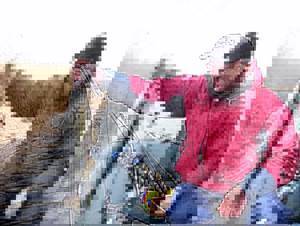
Even in the most active season, a representative of the perch family cannot be found in every place of the reservoir. Sheer trolling for pike perch from a boat should be done correctly by selecting a fishing spot. When choosing a fishing area, preference should be given to the bottom with uneven terrain, holes, and snags. Sandy, rocky or shell soil is also welcome. Large and small fangs prefer this kind of terrain.
In the territory of small rivers, the fanged one can be found in the edges of the riverbed, in holes near the banks, in whirlpools, and in streams behind the rifts. The favorite places for pike perch on deep and wide lakes are rocky tables, snags, and edges. On reservoirs, the fanged likes to be buried in dam drains, riverbeds and snags. It is in such places that you need to look for fish using an echo sounder, jig wiring and fishing the reservoir.

